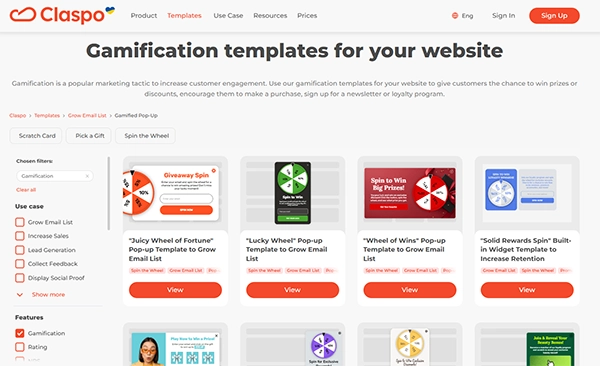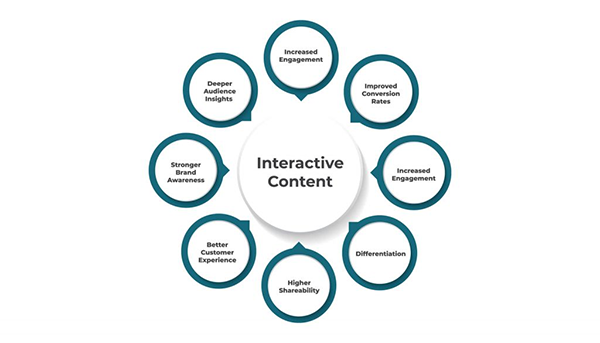Gamification vs Discounts: Which Drives More Engagement on E-Commerce Sites?
Popups used to be simple: flash a discount, grab an email, close the deal. But today’s users are harder to impress. They’ve seen every variation of “10% off your first order” and learned to ignore it. If a pop-up doesn’t add value or spark curiosity in the first second, it’s dismissed.
This challenge is evident in broader e-commerce trends: the average e-commerce conversion rate globally hovers between 2-4%, underscoring the constant battle for brands to capture attention and convert visitors into customers.
That’s why e-commerce brands are going beyond the fundamentals. Rather than simply providing discounts, they’re employing gamified experiences like spin-to-win wheels or scratch cards to draw users in.
In this article, we’ll break down how gamification and discounts compare when delivered through popups. You’ll discover what each is best at, where they come up short, and how to select the best match for your audience and goals.
KEY TAKEAWAYS
- Effective popups are well-timed pushes, not interruptions, crucial for minimizing bounce and capturing abandoned visitors.
- Discounts: Instant Gratification: They tap into FOMO and urgency for quick conversions but risk eroding perceived value and training users to wait for deals.
- Gamification: Deeper Engagement: These popups use interactivity, chance, and rewards to boost time on site, generate quality leads, and provide behavioral data.
- Use discounts for quick wins (flash sales, rapid list building). Use gamification for long-term brand engagement and data capture.
- Combining gamification with discounts, such as spin-to-win a discount, often outperforms either strategy alone.
- Always A/B test, trigger with user intent, like exit-intent, and keep messages short and clear for optimal results.
Why Popups Still Matter in 2025
Popups get a bad rap, but not because they don’t work. It’s because most of them are lazy. A well-designed pop-up is not an interruption; it’s a well-timed push that brings the user one step further towards action.

Claspo’s templates library
Implemented correctly, popups minimize bounce rate, retrieve abandoning visitors, and assist shoppers who’d otherwise depart without accomplishing much. They can highlight limited-time offers, capture emails before users exit, or recommend products based on behavior without forcing the user into a decision.
What’s changed in 2025 is how popups are delivered. With tools such as Claspo, it becomes simple to display the correct message to the correct user at the correct moment. It is possible to create mobile-friendly, targeted popups using rules such as scroll depth, cart value, or time on site. Add personalization or plug in one of Claspo’s gamified templates, and you’re not just popping up—you’re starting a conversation.
The Psychology Behind Discounts
Discounts are effective because they engage something primal: the excitement of receiving more for less. That hit of instant gratification makes people act quickly especially when the offer feels limited. A countdown timer or an exit-intent popup promising “10% off if you stay” plays right into FOMO and urgency. Click here to explore limited-time popup templates.
Popup formats vary, but the logic stays the same:
- Exit-intent offers try to catch the bounce.
- Time-limited deals speed up decisions.
- Cart-based discounts reduce hesitation at checkout.
The upside? Discounts are frictionless. No need to explain how they work. Just click, apply, convert.
The downside? Overuse trains your audience to wait for a deal. It also eats into margins and erodes perceived value over time. If every visitor gets a coupon, the discount stops feeling special and your full price stops feeling real.
INTERESTING FACT
Interactive content, such as gamified experiences, generates 2x more engagement than static content, leading to higher conversion rates and improved brand recall.

What Makes Gamified Popups Different
Gamified popups flip the script. Instead of handing users a deal, they invite them to earn it through a spin, a scratch, or a quiz. It’s not just about discounts; it’s about engagement.
At their core, gamified popups use three psychological hooks:
- Interactivity keeps users involved.
- Chance adds excitement.
- Rewards give it all purpose.
Formats vary—spin-the-wheel is the classic, but scratch cards, mystery boxes, and quiz-to-win flows are catching up fast. What makes them effective isn’t the format. t’s the feeling of “I played, so I deserve this.”
Done correctly, gamified popups boost time on site, generate more email sign-ups, and provide behavioral data in exchange. But they’re not plug-and-play. If the experience is clunky or the reward is underwhelming, it can feel gimmicky.
What Drives More Interaction: Gamification or Discounts?
It depends on what you’re measuring and who you’re targeting.
Click-through rates and coupon redemptions tend to be higher, particularly among new visitors or price-conscious consumers. They perform best when the objective is instant action: empty the cart, build a list quickly, or promote a flash sale.
Gamified popups, meanwhile, excel when you’re looking for more profound engagement. They tend to create more time on site, more quality email sign-ups, and greater user interaction.
For other brands, the sweet spot is a hybrid: a spin-the-wheel popup that gives away a discount code, for instance, or a quiz that finishes with a surprise offer. This marries the urgency of discounts to the interactivity of gamification and outperforms both when done right.
The question isn’t which strategy prevails. It’s which one suits your audience, your objective, and your time.
How to Choose What Fits Your Store
If your objective is quick wins like moving inventory, creating a flash sale, or getting emails quickly, discount popups are the low-hanging fruit.
If you are playing the long game like developing brand engagement, capturing zero-party data, or enhancing the memorability of user experience, gamification is worth the additional effort.
A popup game that slows or crashes on mobile will cause more damage than benefit. Opt for formats that load quickly, appear aesthetically pleasing, and don’t clutter the screen, particularly on mobile, where the majority of traffic occurs.
Best Practices for Both
Whether you’re offering a discount or running a game, the rules for smart popups are the same.
Start by testing, not guessing. A/B test your formats—wheel vs. static, 10% vs. 15%, image vs. no image. What works on one landing page might flop on another.
Next, trigger with intent. Don’t show the same popup to everyone. Use scroll depth, exit intent, or time-on-page to catch users when they’re most likely to act. A well-timed popup feels helpful. A random one just feels annoying.
Keep your message short. You’re not writing a pitch deck. One clear offer, one clear action.
Ans: When well-designed and targeted, popups act as timely nudges that can minimize bounce rates, capture abandoned visitors, and drive conversions without being overly intrusive.
Ans: Discounts tap into the primal excitement of getting “more for less” and leverage fear of missing out (FOMO) and urgency to prompt quick action.
Ans: Gamified popups engage users through interactivity, the thrill of chance, and the satisfaction of earning a reward, fostering deeper engagement rather than just immediate conversion.
Ans: Use discount popups for quick wins, such as moving inventory, running flash sales, or rapidly building an email list due to their direct, frictionless nature.
Ans: Always A/B test different formats and offers, trigger popups based on user intent, like scroll depth, exit intent, and keep the message concise with a clear call to action.
